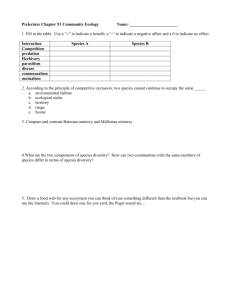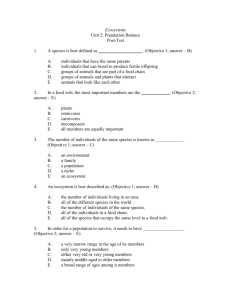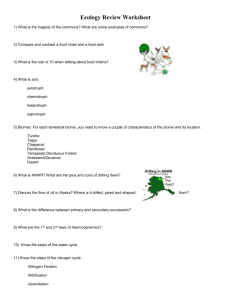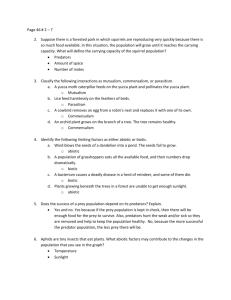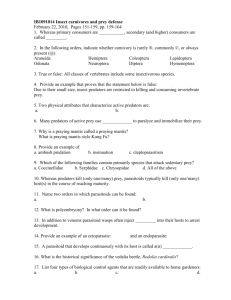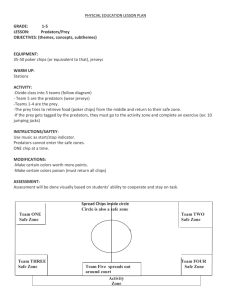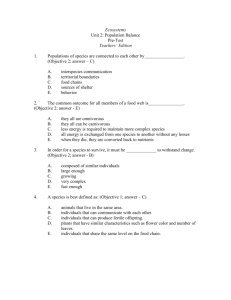Chapter 20/Section 3 Notes
advertisement
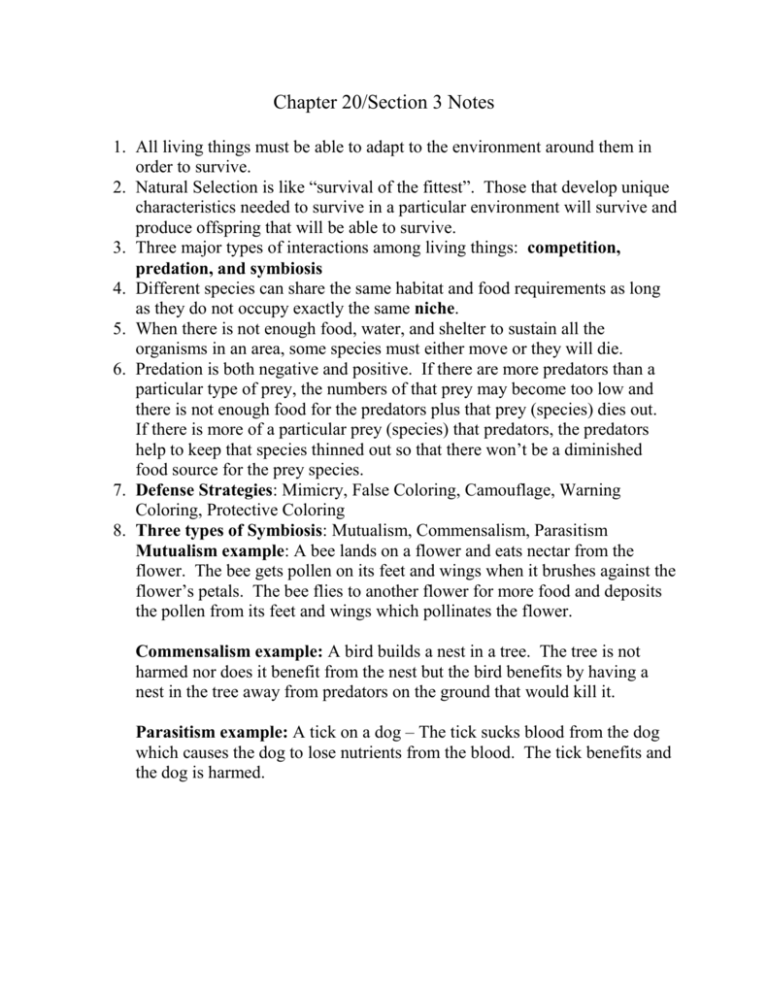
Chapter 20/Section 3 Notes 1. All living things must be able to adapt to the environment around them in order to survive. 2. Natural Selection is like “survival of the fittest”. Those that develop unique characteristics needed to survive in a particular environment will survive and produce offspring that will be able to survive. 3. Three major types of interactions among living things: competition, predation, and symbiosis 4. Different species can share the same habitat and food requirements as long as they do not occupy exactly the same niche. 5. When there is not enough food, water, and shelter to sustain all the organisms in an area, some species must either move or they will die. 6. Predation is both negative and positive. If there are more predators than a particular type of prey, the numbers of that prey may become too low and there is not enough food for the predators plus that prey (species) dies out. If there is more of a particular prey (species) that predators, the predators help to keep that species thinned out so that there won’t be a diminished food source for the prey species. 7. Defense Strategies: Mimicry, False Coloring, Camouflage, Warning Coloring, Protective Coloring 8. Three types of Symbiosis: Mutualism, Commensalism, Parasitism Mutualism example: A bee lands on a flower and eats nectar from the flower. The bee gets pollen on its feet and wings when it brushes against the flower’s petals. The bee flies to another flower for more food and deposits the pollen from its feet and wings which pollinates the flower. Commensalism example: A bird builds a nest in a tree. The tree is not harmed nor does it benefit from the nest but the bird benefits by having a nest in the tree away from predators on the ground that would kill it. Parasitism example: A tick on a dog – The tick sucks blood from the dog which causes the dog to lose nutrients from the blood. The tick benefits and the dog is harmed.
